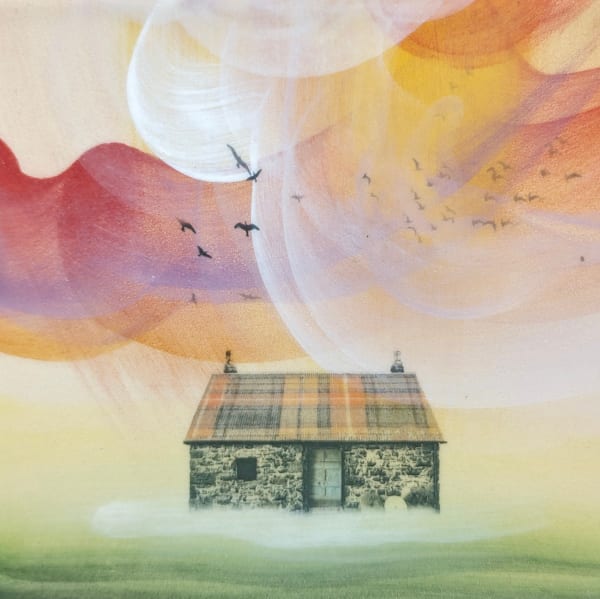Esther Cohen
"My aim is to translate the felling of an ever-changing sky into a series of works that show the different light, colour, atmospheres and mmods created by the weather in Scotland "
Esther lives and works on the South East Coastline of Central Scotland and finds this landscape a never-ending source of inspiration. She began making her own work in 2008 after a career lecturing in art and design. As a visual artist Esther's current practice involves three areas of work. The first is exploring ideas and concepts relating to themes around sources of energy, both natural and man-made and their time and place in society. The second is making hand painted ceramic tiled panels for interior commissions and the third is designing prints and images for commercial giftware for her publisher in Edinburgh. While the continuing commercial popularity of her 'Bothy' series has featured in magazine articles, one of her Torness Nuclear Power Station pieces was chosen as the cover image for 'FLOW' Visual Art Scotland's online Exhibition in 2020 and most recently was a selected artist for The Scottish Landscape Awards 2023.
Inspired by the infinity changing skies along the coast near Edinburgh and East Lothian, Esther specialises in producing highly individual hand-painted ceramic tiles.
The process of capturing the light and atmosphere of these immense skies is contrasted by working on a very small surface area of an unglazed, bisque tile.
“When I left school, I spent a year as an apprentice potter, eventually throwing 100 mugs a day on a kick wheel that had been customised with a motor from an old washing machine found in the local skip. The kick wheel had been designed, made and customised by my late father, the potter and ceramic artist Dave Cohen.”
Esther paints with ceramic underglaze, then uses drawing and photography to create images for ceramic transfers which are fired onto the tiles. She also scans her glazed tiles to create her digital photomontages and prints using Photoshop. Esther finds that using both traditional and digital techniques give her the variety of technique and scope to sequentially develop her ideas into the finished work.

